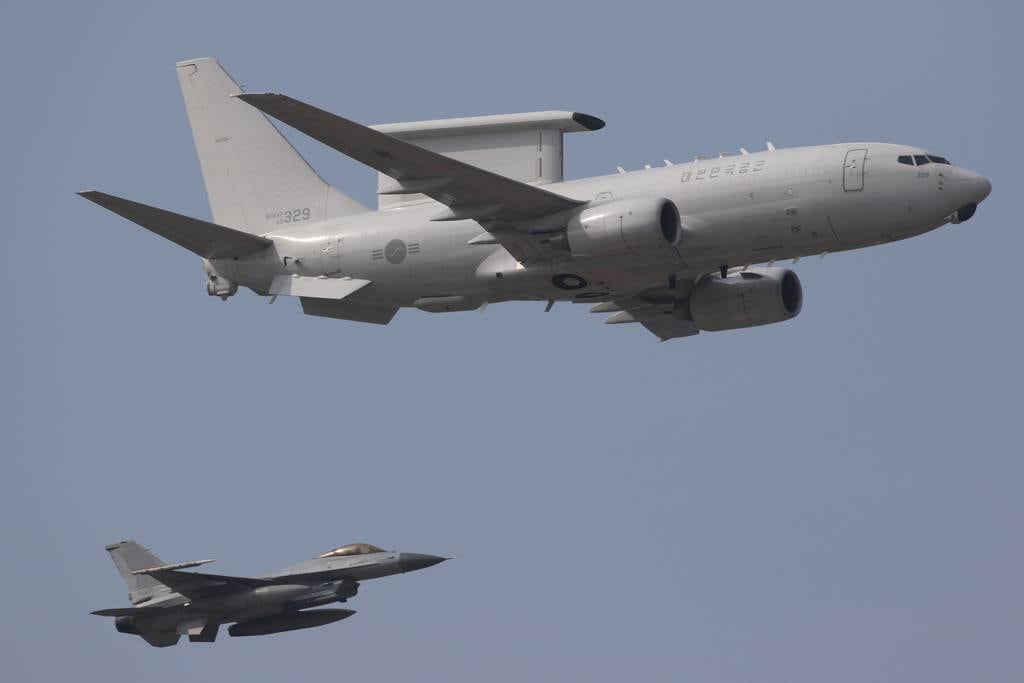CHRISTCHURCH, New Zealand — Several international vendors are intent on helping South Korea bolster its airborne early warning and control capability, as the country’s Air Force plans to spend at most $2.26 billion on four aircraft.
After the Defense Acquisition Program Administration issued a request for proposals in November, companies had until Feb. 22 to submit their bids.
South Korea is taking on more self-defense responsibilities from the U.S., and the new quartet of AEW&C aircraft will supplement four Boeing E-737 planes delivered around the 2011-2012 time frame. The Defense Acquisition Program Administration said the new platforms would enhance the South’s “ability to monitor North Korean missiles and defend its airspace.”
Boeing is competing with a 737-based platform again, its E-7 having the advantage of aerial refueling to give on-station times stretching to 20 hours.
“Regarding the capability, the unmatched E-7 multirole electronically scanned array radar sensing and tracking provides the most powerful multidomain surveillance, communications and networked battle-management capabilities of any aircraft,” a Boeing spokesperson told Defense News.
The American company, which is the fifth-largest defense contractor in the world, said the E-7 “is production-ready and offers lower operating and sustainment costs, higher mission readiness rates, and unmatched interoperability.”
Boeing executives at South Korea’s Seoul ADEX defense expo last year claimed a 96% availability rate for the E-7. They also highlighted commonality with existing Korean E-737s. “In addition to crew training efficiencies, the E-7 offers life-cycle cost savings inherent with fleet continuity and a global, common logistics model.”
Saab’s GlobalEye is also competing, with the Swedish company proposing a Bombardier Global 6500 airframe.
Saab believes its design, which mounts an Erieye extended-range radar atop the fuselage, is ideal for South Korea’s Air Force. As well as a hot production line, Saab touted its willingness to transfer technology to enhance Korea’s strategic independence. It also highlighted rapid delivery and affordability.
Saab is the 33rd biggest defense contractor worldwide.
The other contender is American firm L3Harris Technologies in tandem with Korean Air and Israel Aerospace Industries. Its Phoenix solution also uses a Global 6500 and integrates Elta Systems-made conformal radars and artificial intelligence algorithms. L3Harris claimed its design will have low sustainment costs and at least a 95% operational availability rate.
L3Harris is the ninth-largest defense company in the world, while IAI lands at 29. The former noted that an initial two aircraft would undergo modifications in Texas before receiving radar integration in Israel. Korean Air would lead work on the two remaining aircraft in-country, as well as perform sustainment.
“Through L3Harris’ agreements with Korean Air, LIG Nex1 and Ace Antenna, and ongoing discussions with additional Korean partners, the team intends that the aircraft and mission system equipment will be fully supported in Korea,” a spokesperson for the group told Defense News. “This … paves the way for independent domestic research and development, and fostering excellence in aircraft system integration, upgrades and modifications, which will contribute significantly to the advancement of South Korea’s research and development program.”
The Defense Acquisition Program Administration declined to provide Defense News with further details. The agency is now proceeding with evaluations.
Gordon Arthur is an Asia correspondent for Defense News. After a 20-year stint working in Hong Kong, he now resides in New Zealand. He has attended military exercises and defense exhibitions in about 20 countries around the Asia-Pacific region.








